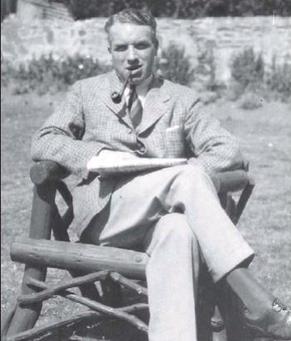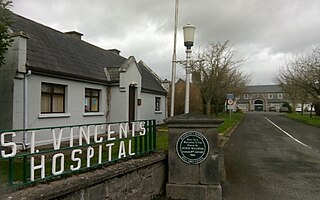Related Research Articles

Carrickmacross is a town in County Monaghan, Ireland. The town and environs had a population of 5,032 according to the 2016 census, making it the second-largest town in the county. Carrickmacross is a market town which developed around a castle built by the Earl of Essex in 1630. The town is 20 km west of Dundalk and 75 km north-north-west of Dublin city centre and 106 km south west of Belfast. Carrickmacross won the European Entente Florale Silver Medal Award in 1998. The local Gaelic football and hurling club is Carrickmacross Emmets. The local soccer team is Carrick Rovers.
Black people, Africans and people of African descent have lived in Ireland in small numbers since the 18th century. Throughout the 18th century they were mainly concentrated in the major cities and towns, especially in the Limerick, Cork, Belfast, Kinsale, Waterford, and Dublin areas. Increases in immigration have led to the growth of the community across Ireland. According to the 2022 Census of Population, 67,546 people identify as Black or Black Irish with an African background, whereas 8,699 people identify as Black or Black Irish with any other Black background.
The Commission to Inquire into Child Abuse (CICA) was one of a range of measures introduced by the Irish Government to investigate the extent and effects of abuse on children from 1936 onwards. Commencing its work in 1999, it was commonly known in Ireland as the Laffoy Commission after its chair, Justice Mary Laffoy. Laffoy resigned as chair in 2003 and was succeeded by Justice Sean Ryan, with the commission becoming known as the Ryan Commission. It published its final public report, commonly referred to as the Ryan report, in 2009.
The Congregation of the Sisters of Bon Secours is an international Roman Catholic women's religious congregation for nursing, whose declared mission is to care for those who are sick and dying. It was founded by Josephine Potel in 1824, in Paris, France. While the Congregation's stated object is to care for patients from all socio-economic groups, in some territories they only operate for-profit private hospitals. Reflecting their name, the Congregation's motto is "Good Help to Those in Need."

Daniel Cohalan (1858–1952) was an Irish Roman Catholic clergyman who served as the Bishop of Cork from 1916 to 1952.
Bethany Home was a residential home in Dublin, Ireland mainly for Protestant unmarried mothers and their children, and also for Protestant women convicted of petty theft, prostitution, and infanticide. Most had a Church of Ireland background. The home was run and managed by evangelical Protestants, who, in the main, were Plymouth Brethren, Church of Ireland or Presbyterian. It catered to "fallen women" and operated in Blackhall Place, Dublin (1921–34), and then in Orwell Road, Rathgar (1934–72), until its closure. The home sent some children, some unaccompanied, to Northern Ireland, England, and to the United States.
Sean Ross Abbey south of Roscrea in County Tipperary, Ireland, is a convent and the location of St Anne's Special School run by the Sisters of the Sacred Hearts of Jesus and Mary. St Crónán is believed to have founded a monastery at this location in the 6th century.

The Bon Secours Mother and Baby Home that operated between 1925 and 1961 in the town of Tuam, County Galway, Ireland, was a maternity home for unmarried mothers and their children. The Home was run by the Bon Secours Sisters, a religious order of Catholic nuns, that also operated the Grove Hospital in the town. Unmarried pregnant women were sent to the Home to give birth and interned for a year doing unpaid work.
Catherine Corless is an Irish historian, known for her work in compiling the information concerning the deaths of children at the Bon Secours Mother and Baby Home in Tuam, Galway. After gaining an interest in local history from attending an evening course, Corless decided to write an article about the mother and baby home inspired by her own childhood memories of the institution. She spent her spare time searching records in libraries, churches and council offices, and uncovered that 796 children died in the home. She found death certificates but identified that there were no burial records. The bodies were eventually found to have been disposed of in a disused septic tank on the property. She has received a number of awards in recognition of her work, including a People of the Year Award in 2018. Following the 2020 government report on deaths and abuses at Mother and Baby homes, the Irish Taoiseach Micheal Martin called Corless a “tireless crusader of dignity and truth”.
PACT is an Irish adoption organisation founded in 1952, formerly called the Protestant Adoption Society. Its main office, Arabella House in Rathfarnham, is named after the philanthropist Lady Arabella Denny. PACT is a registered charity, providing a range of adoption services to Irish families and is accredited by the Adoption Authority of Ireland. PACT run the Here2Help Crisis Pregnancy Service.

The Mother and Baby Homes Commission of Investigation was a judicial commission of investigation, established in 2015 by the Irish government to investigate deaths and misconduct during the 20th century in mother and baby homes—institutions, most run by Catholic religious nuns, where unwed women were sent to deliver their babies. It was set up following statements that the bodies of up to 800 babies and children may have been interred in an unmarked mass grave in the Bon Secours Mother and Baby Home, located in Tuam, County Galway. Its remit additionally covered investigation into the records of and the practices at an additional thirteen Mother and Baby Homes. The members of the three-person Commission were Judge Yvonne Murphy (chairperson), Dr William Duncan and Professor Mary E. Daly.
The Waterford Union Workhouse was a workhouse built in 1839–41 on a six-acre site to the south of Waterford in Ireland.

James Andrew Donnelly Deeny was the Chief Medical Adviser of the Republic of Ireland and a senior administrator in the World Health Organization.

Laura Angela Collins is a London-based Irish Traveller activist and author.

In the Irish Free State and Republic of Ireland, the county home was an institution which replaced workhouses from 1922 onwards.
Maeve O'Rourke is an Irish human rights lawyer. She is known for her involvement in seeking access for survivors and adopted people to their own personal data, and the publication of appropriately anonymised administrative files, contained in 'historical' abuse archives in Ireland including the archives of the Commission of Investigation into Mother and Baby Homes, the Ryan Commission that investigated Industrial and Reformatory Schools, and the 'McAleese' Committee that inquired into Magdalene Laundries. As of 2020, she lectures in Human Rights Law at the Irish Centre for Human Rights in NUIG. She is a member of Justice for Magdalenes Research. O'Rourke campaigns on behalf of unmarried mothers and their children. She has represented victims before the Irish Human Rights Commission, and numerous United Nations human rights treaty bodies. In October 2020, she was critical of the Government's statement that it intended to 'seal' information regarding Ireland's mother and baby homes for 30 years.
Mary Teresa Collins is an Irish Traveller survivor of Irish institutions such as the Magdalene laundries, industrial schools and county homes. Collins co-founded the campaign organisation, Justice 4 All Women & Children.
The Castlepollard Mother & Baby Home that operated between 1935 and 1971 in the town of Castlepollard, County Westmeath, Ireland, was a maternity home for unmarried mothers and their children in the former Kinturk Demesne or Manor previously owned by the 'Old English' Pollard family. The Home was run by the Sisters of the Sacred Hearts of Jesus and Mary, a religious order of Catholic nuns.
The Stranorlar County Home or Stranorlar Mother & Baby Home, Stranorlar, County Donegal, Ireland was a Home for unmarried women from about 1924 until the 1960s. It was one of 18 institutions investigated as part of the Irish Government's 2021 investigation into abuse and high death rates at Mother & Baby Homes following the discovery of hundreds of children at Bon Secours Mother and Baby Home in Tuam, County Galway who had been buried in a septic tank. Stranorlar was included in the investigation as one of four state-run institutions to provide a representative sample of other similar Homes which were not investigated.
The Bessborough Mother & Baby Home, was a home for mothers and their children that operated in Blackrock, County Cork, Ireland, from 1922 until 1998. It was included in an investigation by the Irish government following the discovery of hundreds of bodies at Bon Secours Mother and Baby Home in Tuam, County Galway. The Home was run by Sisters of the Sacred Hearts of Jesus and Mary, a religious order of Catholic nuns. The home was one of the largest in Ireland, with 9,768 women and 8,938 children being admitted. Forced adoptions are recorded in the report, including children who were adopted to families in the United States in return for cash donations, while over 900 children died. Their bodies were buried in unmarked graves.
References
- 1 2 3 4 "Over 9,000 Irish women or 'inmates' went through these doors, forced to repent". thejournal.ie. 11 October 2015. Retrieved 2 December 2020.
- 1 2 Ryan, Órla (30 October 2020). "Q&A: Why was the Commission into Mother and Baby Homes set up and what did it examine?". TheJournal.ie.
- ↑ "The Workhouse in Dublin South, Co. Dublin". www.workhouses.org.uk.
- ↑ "House where Garret FitzGerald launched political career for €2.65m". The Irish Times.
- ↑ "Infant Mortality and Illegitimacy (Chapter 4)". Mother and Baby Homes Commission of Investigation. Department of Children, Equality, Disability, Integration and Youth. 12 January 2021. Retrieved 23 February 2022.
- ↑ Mother and Baby Homes Commission of Investigation (2020). Final Report.
- ↑ Mother and Baby Homes Commission of Investigation (2020). Final Report.
- ↑ Cox, Aengus (19 January 2021). "Group 'shocked' at racism conclusions in mother-and-baby homes report". RTÉ. Archived from the original on 19 January 2021. Retrieved 19 January 2021.
- ↑ O'Keeffe, Donal (24 January 2018). "The very least we can do for survivors like Sheila is remember them". The Avondhu Newspaper.
- ↑ O'Keeffe, Donal (25 November 2020). "With Ireland's shameful past, symbolism cannot beat the power of testimony". The Avondhu Newspaper.
- ↑ O'Keeffe, Donal (25 September 2019). "James Deeny: The doctor who saved hundreds of Bessborough babies' lives". The Avondhu Newspaper.
- ↑ "'Extraordinary' doctor stood up to clergy and closed home". independent. 11 June 2014.
- ↑ "The deaths had been going on for years...They were complacent about it". Irish Examiner. 26 August 2014.
- ↑ Little, Joe (13 February 2019). "Burial plot at Bessborough home in Cork examined". RTÉ News .
- ↑ "Mother and Baby Homes Commission of Investigation". www.gov.ie. March 2021.
- ↑ "Records from Mother and Baby HomesTusla - Child and Family Agency". www.tusla.ie.
- ↑ Burns, Sarah. "Mother and Baby home survivor: 'My identity, heritage and culture was taken from me'". The Irish Times.
- ↑ Keena, Colm. "Mother-and-baby-homes: Dealing with sensitive data a difficult balancing act". The Irish Times.
- ↑ Davenport, Fionn (23 October 2020). "Fionn Davenport: I was born in a mother and baby home - we have a right to our past". TheJournal.ie.
- ↑ O’Rourke, Dr Maeve (21 October 2020). "Dr Maeve O'Rourke: Here's a full analysis of the problems with the Government's Mother and Baby Homes Bill". TheJournal.ie.
- ↑ Maguire, Stephen (12 March 2017). "Donegal artist Sharkey believes care homes across country have secret burial sites – Donegal Daily". www.donegaldaily.com.
- ↑ "Kevin Sharkey Wants To Become Ireland's First Black President". 26 March 2018.
